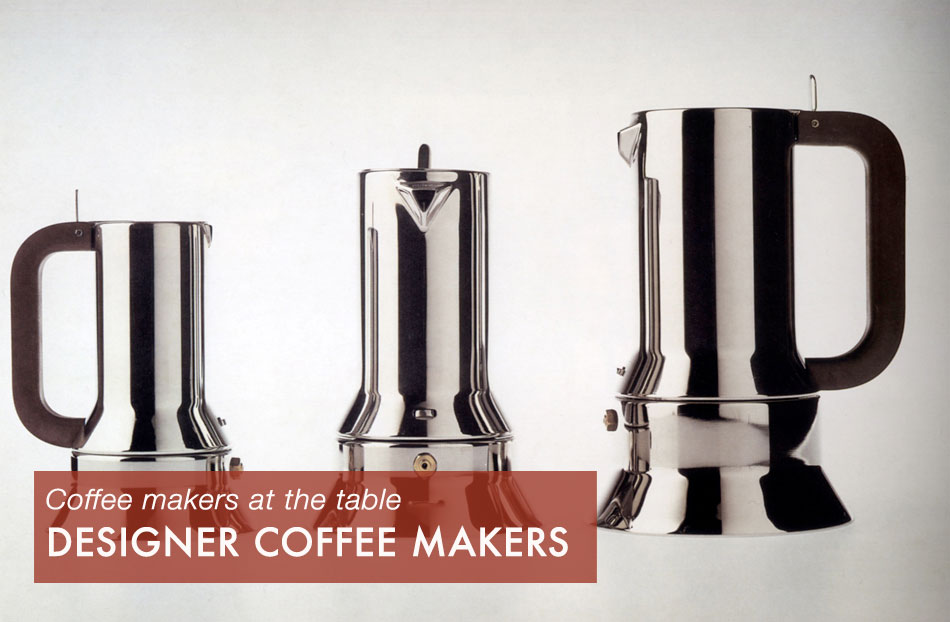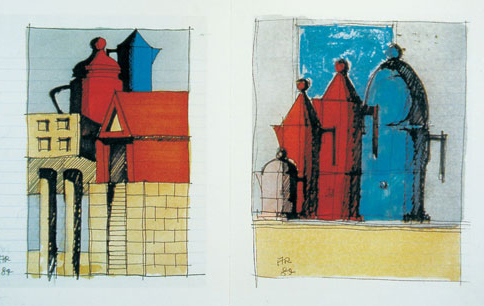

Tea & Coffee Piazza
In 1979, in partnership with Officina Alessi, Alessandro Medini came up with the idea of giving "pure architects" the opportunity to work on and put forward experimental methods, forms and typologies for a designer object. The Tea & Coffee Piazza project focused on two key themes: the concept of the artist multiple and the involvement of international architects in the design.
The tea and coffee set, considered a stable product type that had not changed over the time, was chosen as the object of study and the eleven invited architects were asked to make a set inspired by a "domestic landscape", a sort of square or piazza.
Tea & Coffee Piazza led to the creation of eleven silver sets, produced in limited editions of ninety-nine pieces each. The collection was displayed to the public for the first time in 1983 in an exhibition set up by Hans Hollein in the former church of San Carpoforo in Milan (Centro Internazionale di Brera a Milano) and at the Max Protetch Gallery in New York.
Michael Graves for Alessi, Tea and coffee set for the Tea & Coffee Piazza project, 1979
Aldo Rossi, Designs for La Conica and La Cupola, c. 1987
Top: Richard Sapper for Alessi, Espresso maker 9090, 1979
With the advent of design, the first coffee makers with elevated formal qualities were created for use both in the kitchen and at the table. An excellent example of a designer coffee maker is the 9090 designed by Richard Sapper for Alessi in 1979.
For this new object, Sapper studied particular aspects such as safety, easy of handling and durability. Still in production today, the 9090 coffee maker in 18/10 stainless steel, polished on the outside and with a satin finish on the inside, has an innovative snap closure mechanism that allows the top part to be secured to the boiler effortlessly in just a single action. Another acknowledged benefit of the 9090 is its elegant form, which makes the coffee maker an "amphibious" object, for use both in the kitchen and at the table.
Developed following the Tea & Coffee Piazza project, which challenged architects to reflect on a design theme such as the coffee and tea set, "La Conica" (1984) and "La Cupola" (1987) are two coffee makers by Aldo Rossi, which Alessi began manufacturing within a few years of one another. While "La Conica" is made from stainless steel with a thick copper bottom, "La Cupola" stands out for the use of cast aluminium that made it possible to lower the production price and, hence, the sales price considerably. "La Cupola" is Rossi's response to the classic coffee maker and an attempt to realise his dream of a coffee maker for all.

